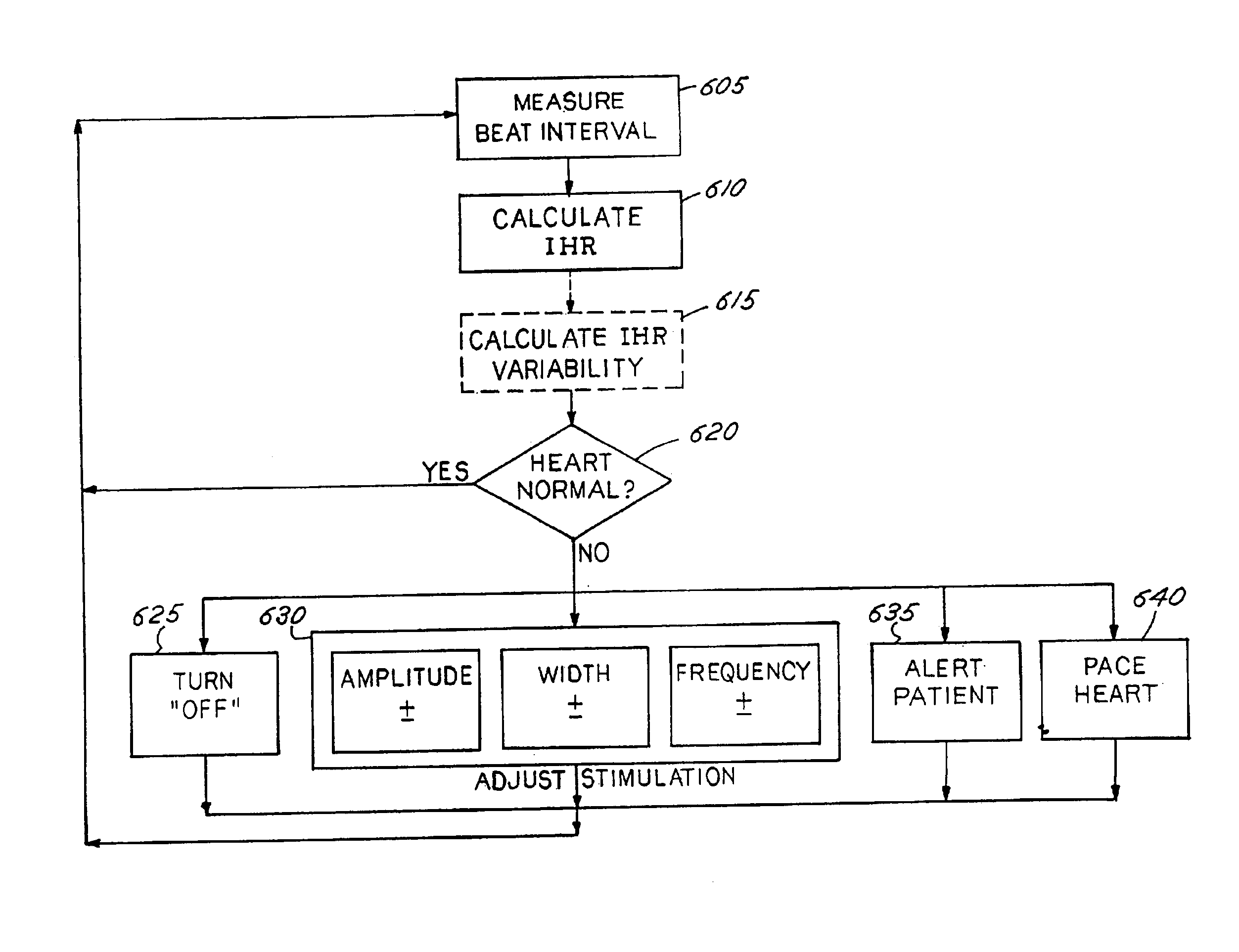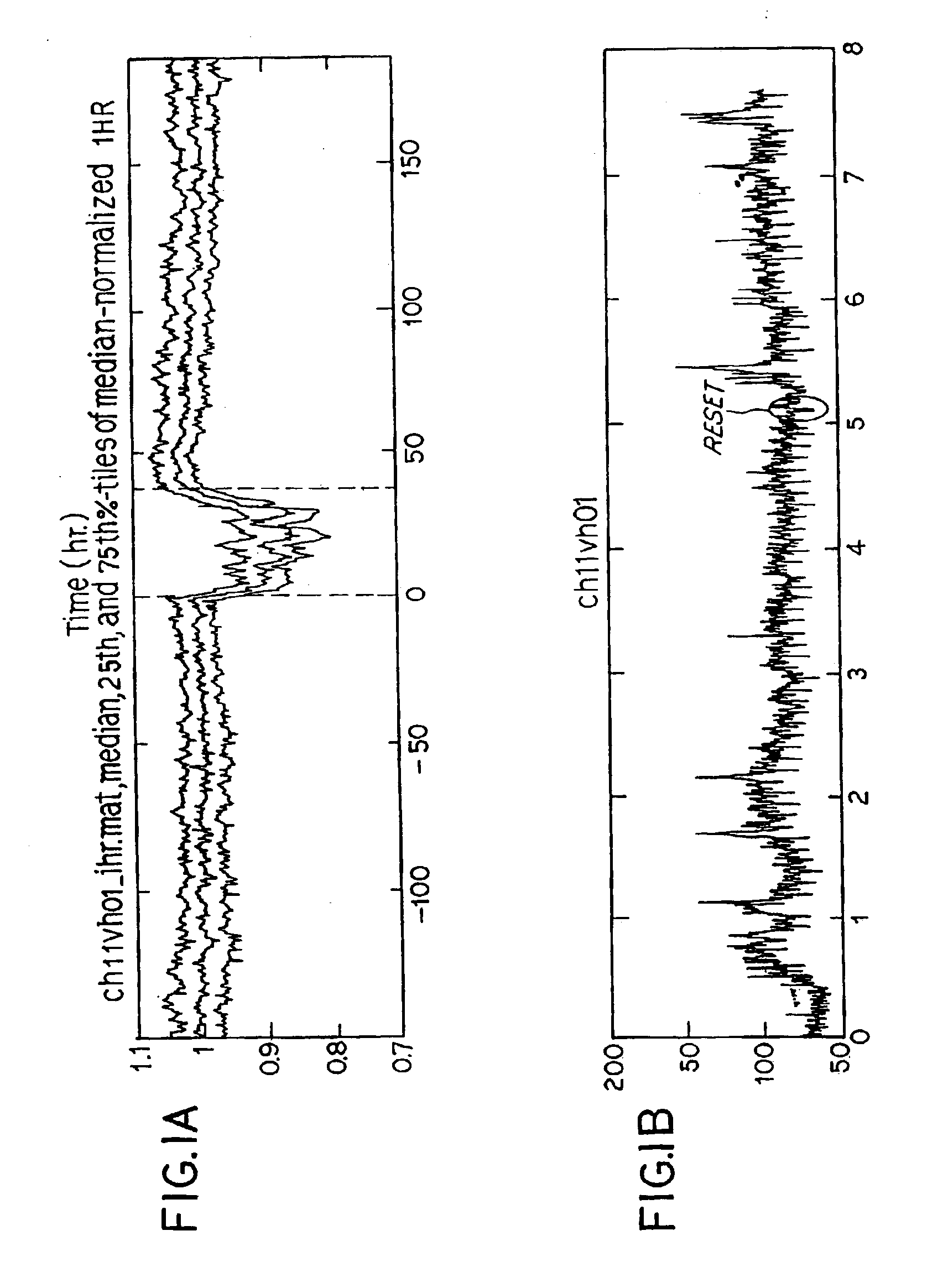Vagal nerve stimulation techniques for treatment of epileptic seizures
a vagal nerve and epileptic technology, applied in the field of neural tissue stimulation techniques, can solve the problems of limited therapeutic efficacy of the currently available vns treatment technique for epilepsy, and affecting the treatment effect of epilepsy,
- Summary
- Abstract
- Description
- Claims
- Application Information
AI Technical Summary
Benefits of technology
Problems solved by technology
Method used
Image
Examples
Embodiment Construction
[0028]Referring to FIG. 2, a system 10 made in accordance with a preferred embodiment may be implanted below the skin of a patient. System 10 generally includes a sensor 15 for sensing a characteristic of the heart 55 of the patient, a signal generator 20, and one or more stimulation electrodes 25. System 10 may be a modified version of the devices disclosed in the Zabara patents and are incorporated herein by reference.
[0029]Sensor 15 is implemented at or near the heart 55 to sense a characteristic of the heart 55, including the heart rate. A number of techniques may be used to sense the heart rate including, but not limited to, QRS detection or R-wave detection techniques, for example, as disclosed in Antti Ruha et al., “A Real-Time Microprocessor QRS Detector System with a 1-ms Timing Accuracy for the Measurement of Ambulatory HRV,” IEEE Transactions on Biomedical Engineering, Vol. 44, No.3, pp. 159-167 (March 1997). Another technique may use standard analog techniques. In altern...
PUM
 Login to View More
Login to View More Abstract
Description
Claims
Application Information
 Login to View More
Login to View More - R&D
- Intellectual Property
- Life Sciences
- Materials
- Tech Scout
- Unparalleled Data Quality
- Higher Quality Content
- 60% Fewer Hallucinations
Browse by: Latest US Patents, China's latest patents, Technical Efficacy Thesaurus, Application Domain, Technology Topic, Popular Technical Reports.
© 2025 PatSnap. All rights reserved.Legal|Privacy policy|Modern Slavery Act Transparency Statement|Sitemap|About US| Contact US: help@patsnap.com



